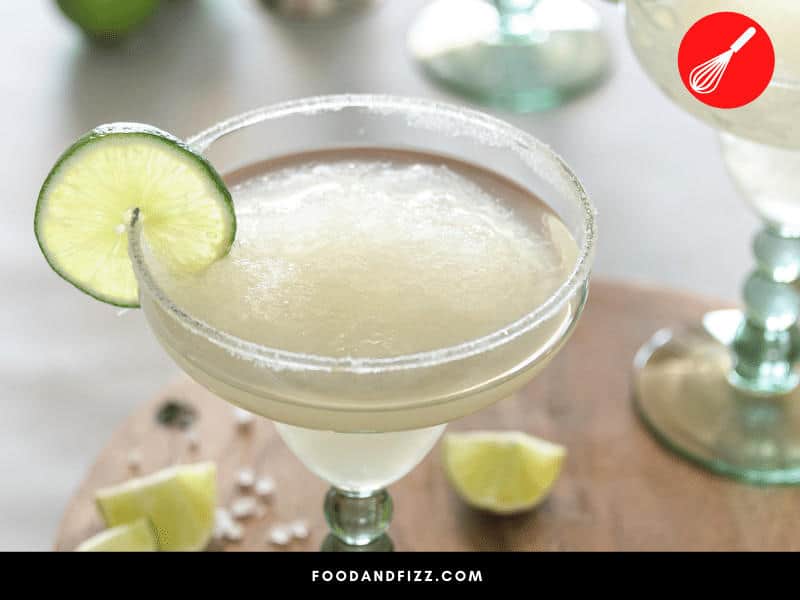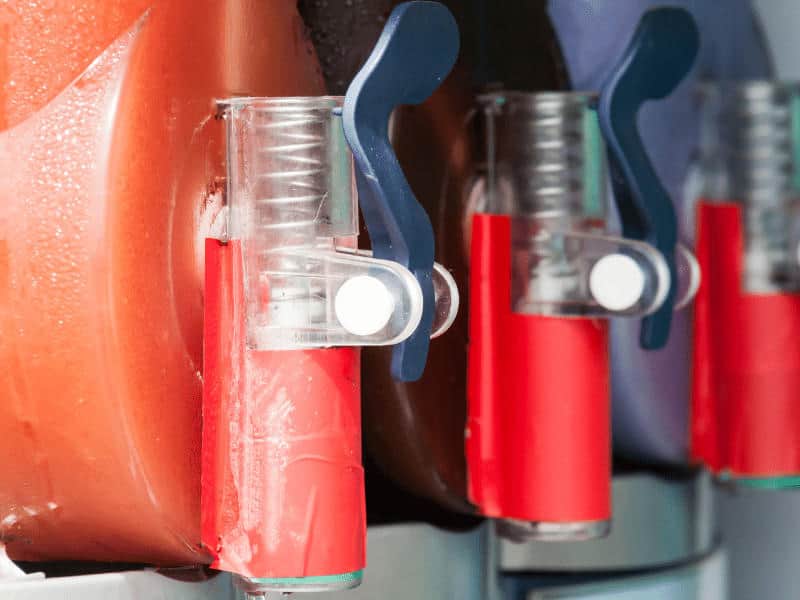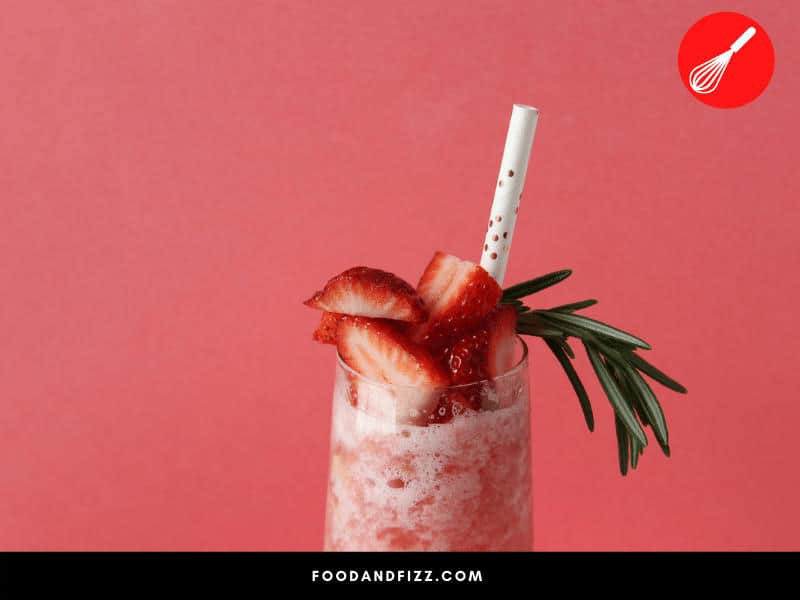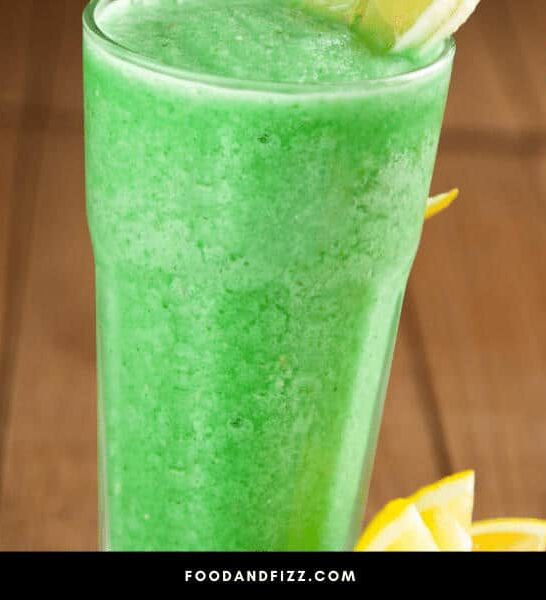How to Keep Frozen Drinks From Separating? A perfectly frozen drink is a thing of joy. Unfortunately, the same cannot be said for a frozen drink that has separated into layers.
Rapidly warming formerly icy layers turn into a turgid and lukewarm miasma that seems to follow your straw like a stalker follows her victim.
For example, together, the ingredients in your tequila sunrise are a tantalizing cornucopia of sultry tropical tastes, and the crushed ice in it is an invisible but essential part of the drink, imparting a delightful chill that transforms the beverage from merely “nice” into “exquisite”.
However, left standing for too long, a horrid transformation can occur.
Suddenly, the pomegranate juice sinks to the bottom of the glass, the orange juice is left sulking like a sullen teenager on its own, the tequila is nowhere to be found, and seemingly out of nowhere, tasteless water constantly makes its way into your straw. It’s a nightmare.
Strangely, the friendly barman on your Nordic cruise serves you a tequila sunrise that can sit like a forgotten castaway in your cabin as you try to get over the latest binge of overindulgence.
The thing is, when you sip tentatively from his tequila sunrise to your happy amazement, it’s still pretty good, although it will be warmer than you like.
Inevitably, you cannot help but wonder how the barman keeps his frozen drink from separating while yours can’t keep it together for five minutes.
How to Keep Frozen Drinks From Separating?
Thoroughly mix frozen drinks into as smooth a uniform liquid as possible to keep drinks from separating. The smaller the ice crystals, the better because these tiny bits of ice bind the disparate ingredients in frozen drinks into homogenous slurries, keeping them from separating for longer. Leave frozen drinks where it is cold to slow the melting of ice. Do not stir or agitate frozen drinks; this will only warm them up and cause their ingredients to separate sooner.

What’s in your frozen drink matters
Earlier, I described the trials, tribulations, and triumphs possible in maintaining a perfect tequila sunrise.
However, there are other frozen drinks that even the most expert barman in the world would have difficulty keeping thoroughly mixed as their contents grow warm, and these are smoothies or drinks with actual fruit in them.
It turns out that to keep frozen drinks thoroughly mixed, what is in the drink matters as much as how you produce them.
The science is relatively simple, and if I touch on it lightly so that anyone can understand it, you will be in good stead to know what drinks will maintain their mixture and what drinks won’t.

The science of frozen drinks
Don’t panic. This doesn’t involve mathematics or frightening experiments with Bunsen burners, or odd little men in white coats with the obligatory insane-looking hairdos.
We’ll just take a gentle stroll along the far banks of science just far enough to get a fair idea of what’s going under the surface of our frozen drinks.
The concept of density
Here’s a trick question for you, and yes, it is a trick question, so mentally, thank me for giving you a heads-up. Question: “Which is heavier, a pound of solid rock or paper bags?”
Of course, solid rock is heavier than paper bags, but a pound is a pound, so it doesn’t matter. A pound of solid rock weighs exactly the same as a pound of paper bags.
Now, how about this puzzle: “Which is heavier, one cubic foot of solid rock or one cubic foot of paper bags?”
This is no trick question, and the answer is a straightforward and unequivocal “one cubic foot of solid rock,” but why should that be?
There is more “matter” in one cubic foot of solid rock than one cubic foot of paper bags; it’s just the way it is. In science, we say that the density of lead is higher than the density of paper bags.
As laypeople, we can understand that for equal amounts of space, some things weigh more than others.

The density of liquids and mixology
It’s not just solids that have density, liquids have them too. A quart of gasoline and a quart of water will weigh differently. By the way, which do you think would weigh more?
Actually, if we were to weigh each quart, the quart of water would always weigh more than the quart of gasoline because the density of water is higher than the density of gasoline, just as the density of solid rock is higher than the density of paper bags.
So, do you see how this works? Stuff with a higher density always weighs more–is always heavier–than stuff with a lower density, which always weighs less–these are always lighter.
What do you think happens when we mix drinks containing liquids with different densities in a glass? I hope you thought, “The heavier liquids would sink, the lighter liquids would rise.” If this is what you said to yourself, pat yourself on the back because you are dead right! (Well done.)
As a budding barperson extraordinaire, you must understand that mixed drinks left to themselves will always separate because the ingredients will all have different densities, and each component has no choice but to obey the laws of nature. However…

Using science to “cheat”
Okay, so it’s not actually cheating (you can’t cheat reality), but you can use the laws of nature to bend situations to your will. One of the handy properties of ice is that it is “sticky”.
I know you might find this hard to believe, but ice is dry, and no, I do not mean “dry ice,” which is an entirely different substance and has nothing to do with this discussion.
I mean, ordinary ice is dry, and in a way, it is “desperate to drink”–to adhere to liquids. (Sorry for yet another aside, but I must apologize to science nerds reading this who may be reaching for a katana to commit hara-kiri–please don’t.
I’m deliberately using language that a layperson can follow, and we’re not all as clever as you. 🙄)
Anyway, because ice is desperate for a drink, like an importunate lover beseeching the return of her unrequited love, ice is clingy, which is why it tries to stick to your fingers or tongue. Ice attaches itself to the surrounding liquid molecules, altering the fluid’s density.
Ice binds liquids and holds them in a slurry
When ice is thoroughly crushed into tiny bits that are hard to see, it acts as a “glue” that holds other liquid ingredients and forms a new type of semi-solid liquid called a slurry.
This new semi-liquid has its own overall density, so it doesn’t separate into layers… until, of course, the inevitable happens. The ice warms up, turns into water, and releases its grip on the surrounding liquids.
Smoothies: pieces of fruit and veg don’t make a true slurry
Smoothies look like a type of slurry, but because they have solid matter from fruits and greens and whatnot, ice is not quite as able to hold onto them as it does to pure liquids. A smoothie is only superficially a slurry.
Actually, rather than being one more-or-less homogenous liquid, smoothies are a temporarily mixed sludge.
Particles suspended in the sludge will always be much denser than any liquid, and these bits of matter will quickly separate out and make their way to the bottom of the glass.
Try as you might, you will not be able to prevent smoothies from separating in a relatively short period of time.
Read about drinks without citric acid next.
How to Keep Frozen Drinks From Separating
To keep frozen drinks from separating:
- Mix into a uniform liquid
- Put the drinks somewhere where it is cold
- Do not stir the frozen drinks
- Let them warm up slowly

